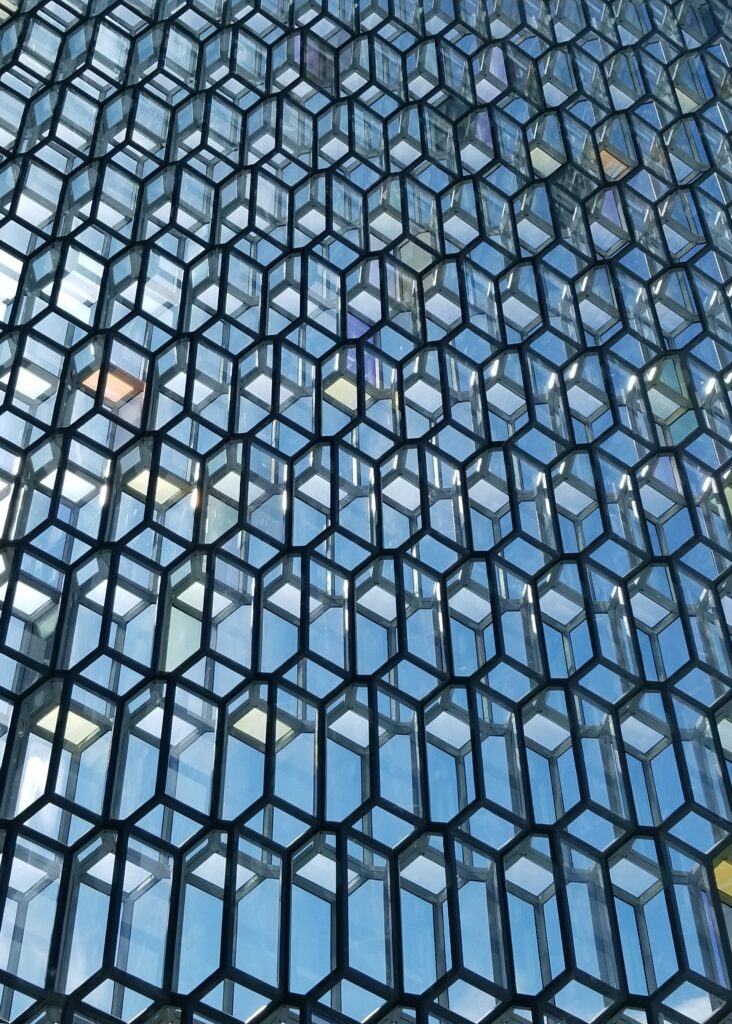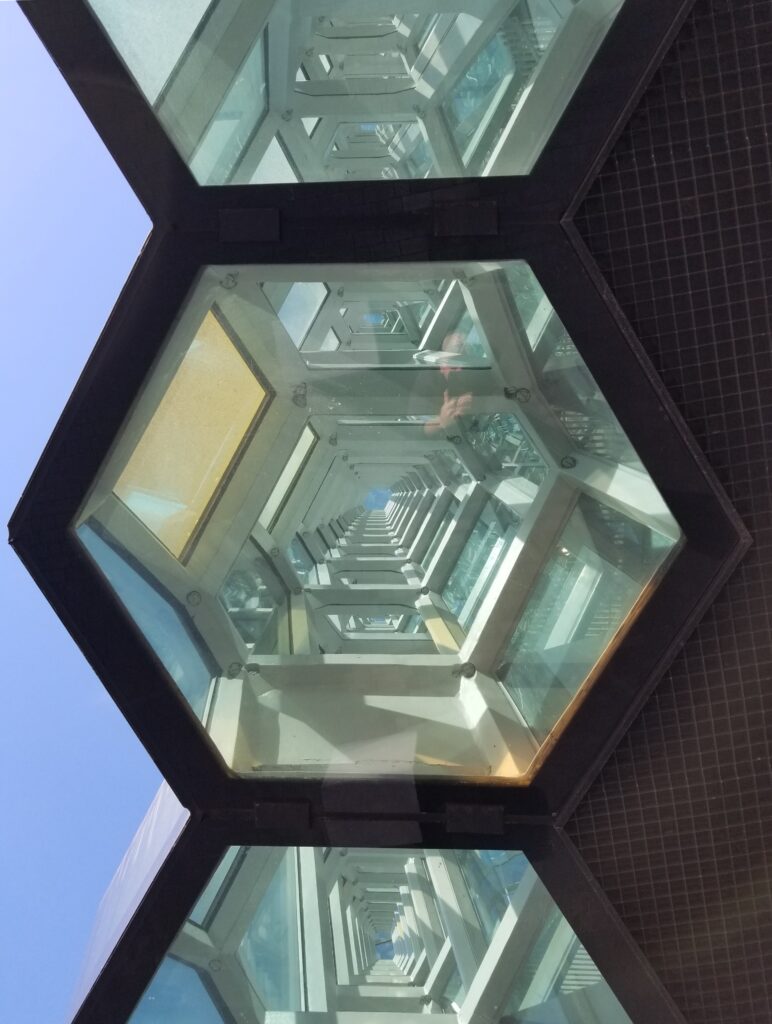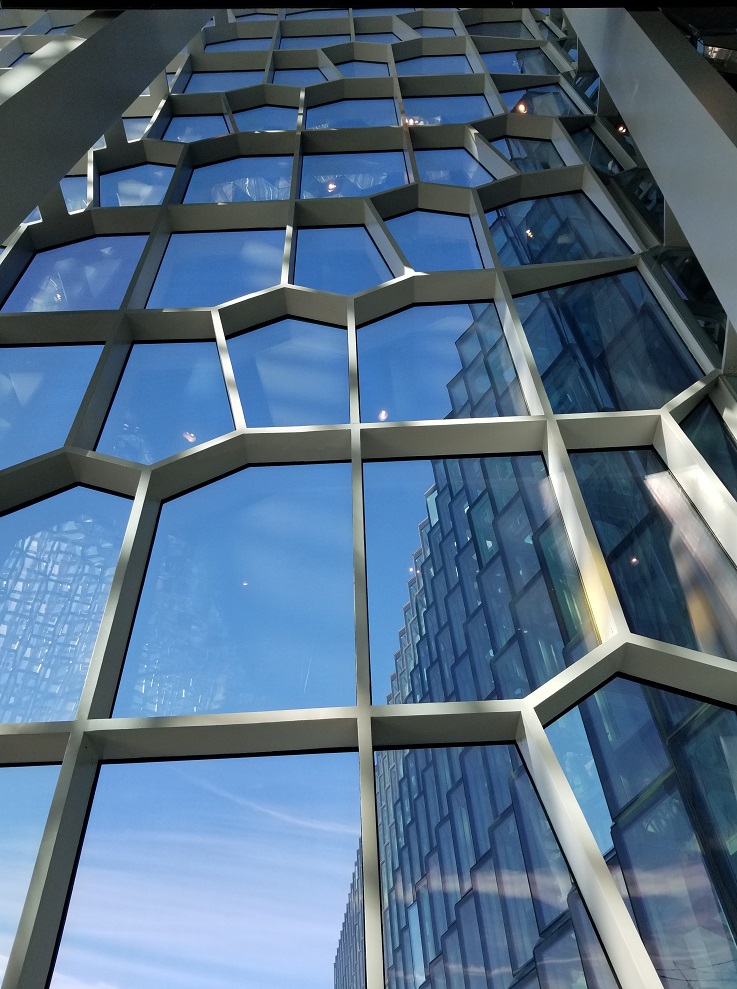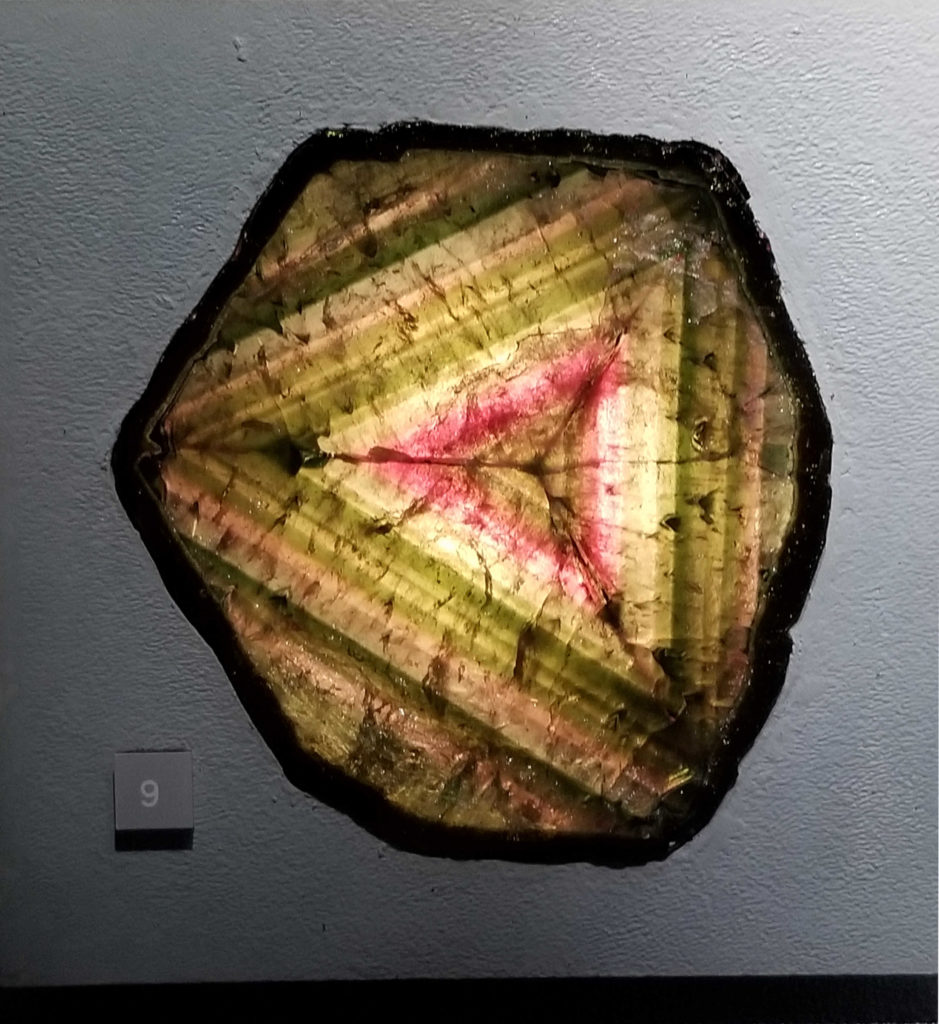Here are some images from Harpa, in Reykjavík, Iceland. Harpa is home to the Iceland Symphony Orchestra and the Icelandic Opera, and is one of the most mathematical buildings I have ever seen.
The face of the building is a solid wall of glass prisms whose faces are hexagons and pentagons.
Here’s a look up through the wall from below.
Different perspectives highlight the different polygons.
Whoever designed this beautiful building certainly knew the theory of pentagonal tilings!






